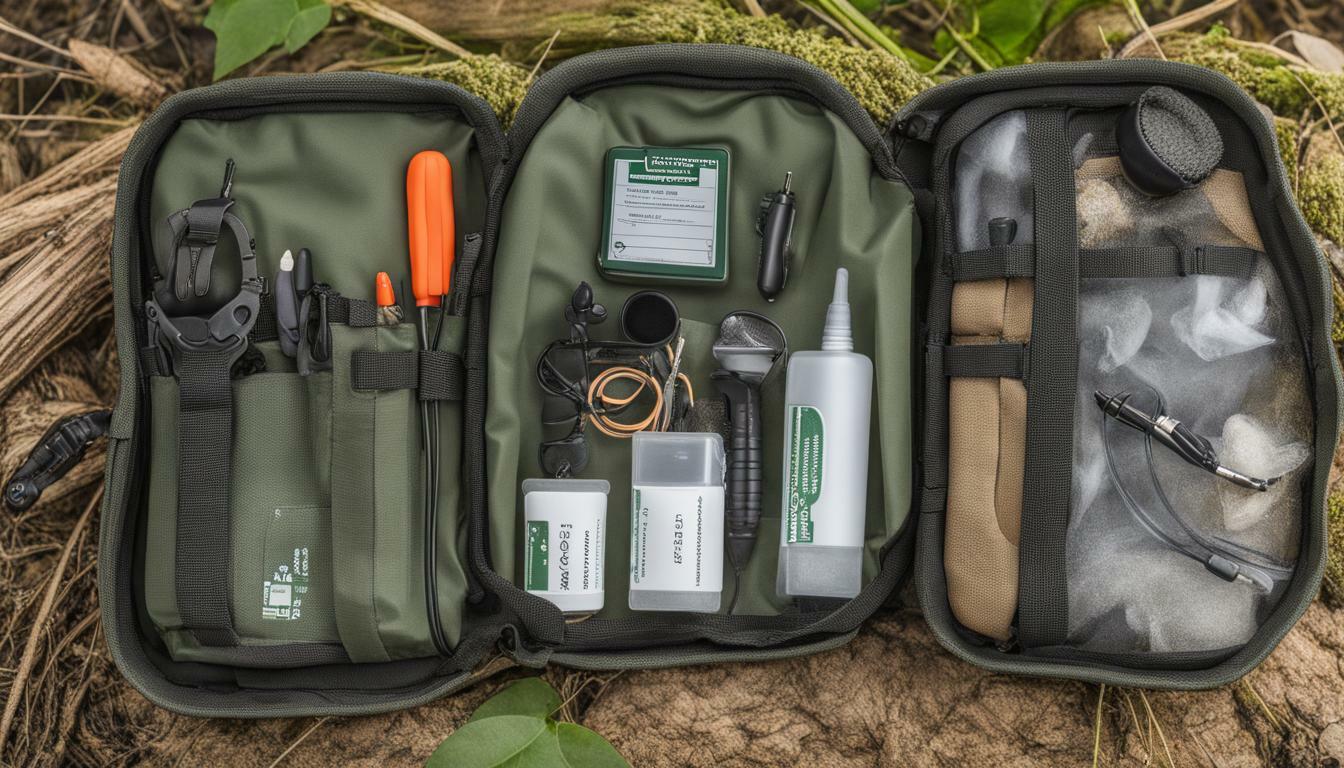Wildlife sound recording can be an exhilarating experience, but it can also be challenging. Recording in the wild, whether in the jungle, forest or savannah, can expose you to various hazards, including insect bites, animal attacks, and accidental injuries. As a wildlife sound recordist, it is paramount to prioritize your safety to ensure a successful and safe recording session.
First aid kits designed specifically for wildlife sound recordists can help ensure that you are equipped to deal with any emergency while in the wild. In this section, we will explore the importance of having first aid kits tailored to wildlife sound recording, and the key items needed to create a comprehensive kit that will ensure your safety while capturing audio.
Key Takeaways
- Wildlife sound recording can expose you to various hazards, and it’s essential to prioritize your safety.
- First aid kits tailored to wildlife sound recording can help ensure that you are equipped to deal with any emergency while in the wild.
- Creating a comprehensive first aid kit that includes essential medical supplies and wildlife rescue kits is crucial for safe sound recording.
Why First Aid Kits are Essential for Wildlife Sound Recordists
When recording audio in the wild, sound recordists must be prepared for any potential risks and challenges. A first aid kit is an essential tool that can help protect recordists from wildlife-related injuries and ensure their overall safety. Here are some first aid essentials that every wildlife sound recordist should have in their kit:
- Bandages and Dressings: These are crucial for treating minor cuts and abrasions, preventing the wound from getting infected and ensuring proper healing.
- Antiseptics: Insect bites, scratches, and other wounds must be disinfected to prevent infections and complications. Antiseptics, like iodine or hydrogen peroxide, can help clean up wounds and prevent further damage.
- Insect Repellents: Insects and other pests can be a nuisance, especially in the wild. Having an insect repellent can prevent bites and stings, and keep recordists safe from diseases carried by insects.
- Sunscreen: Recordists may spend long hours under the sun, increasing their risk of sunburn and skin cancer. Sunscreen with a high SPF rating can help prevent skin damage and protect from the harmful rays of the sun.
Wildlife sound recordists may also want to carry specialized items like wildlife rescue kits, which contain tools and supplies for handling injured animals. These kits can help recordists care for wildlife and prevent further harm while waiting for professional help to arrive.
Having a well-stocked first aid kit is crucial in wildlife sound recording safety, providing recordists with the necessary tools to address injuries and other health concerns. With proper first aid training and essential supplies on hand, sound recordists can capture audio safely and with peace of mind.
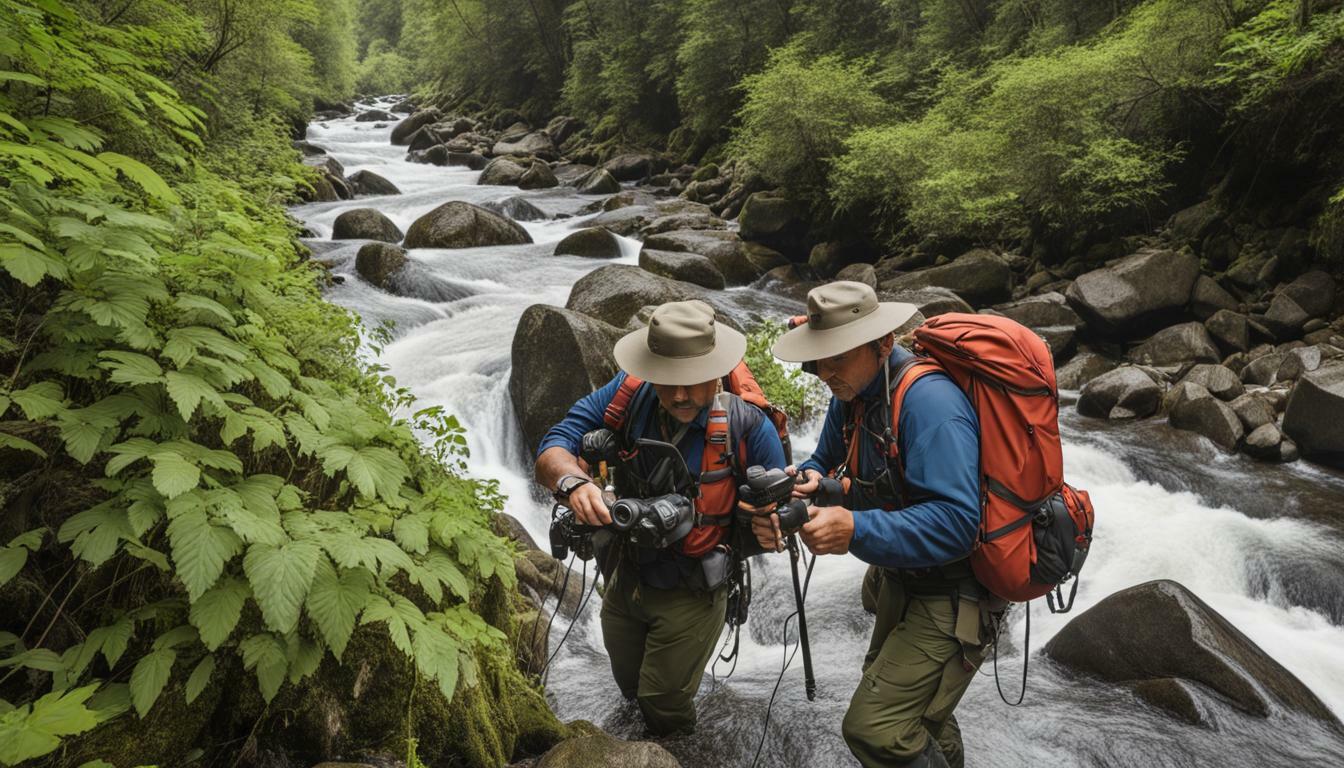
Key Items in a Wildlife Sound Recordists First Aid Kit
When venturing into the wild to capture audio, it is crucial for sound recordists to have a first aid kit containing all the emergency medical supplies they may need. In addition to the standard items found in general first aid kits, wildlife sound recordists require specialized items that cater to the unpredictable nature of wildlife encounters. Below are some of the key items that should be included in a wildlife sound recordist’s first aid kit:
| Item | Purpose |
|---|---|
| Bandages and gauze pads | To stop bleeding and dress wounds |
| Antiseptic wipes or spray | To clean and disinfect wounds |
| Insect repellent | To prevent insect bites and stings |
| Tweezers | To remove splinters and ticks |
| Latex gloves | To avoid cross-contamination and protect against infections |
| Syringes and needles | To administer medication or fluids to injured animals |
| Emergency blanket | To prevent hypothermia |
| Wildlife rescue kits | To safely handle and transport injured animals |
It is important to note that first aid kits for wildlife sound recordists should be regularly checked and updated to ensure that all emergency medical supplies are functional, in good condition, and not expired. Additionally, recordists should know how to use these items correctly and seek professional medical help when necessary.
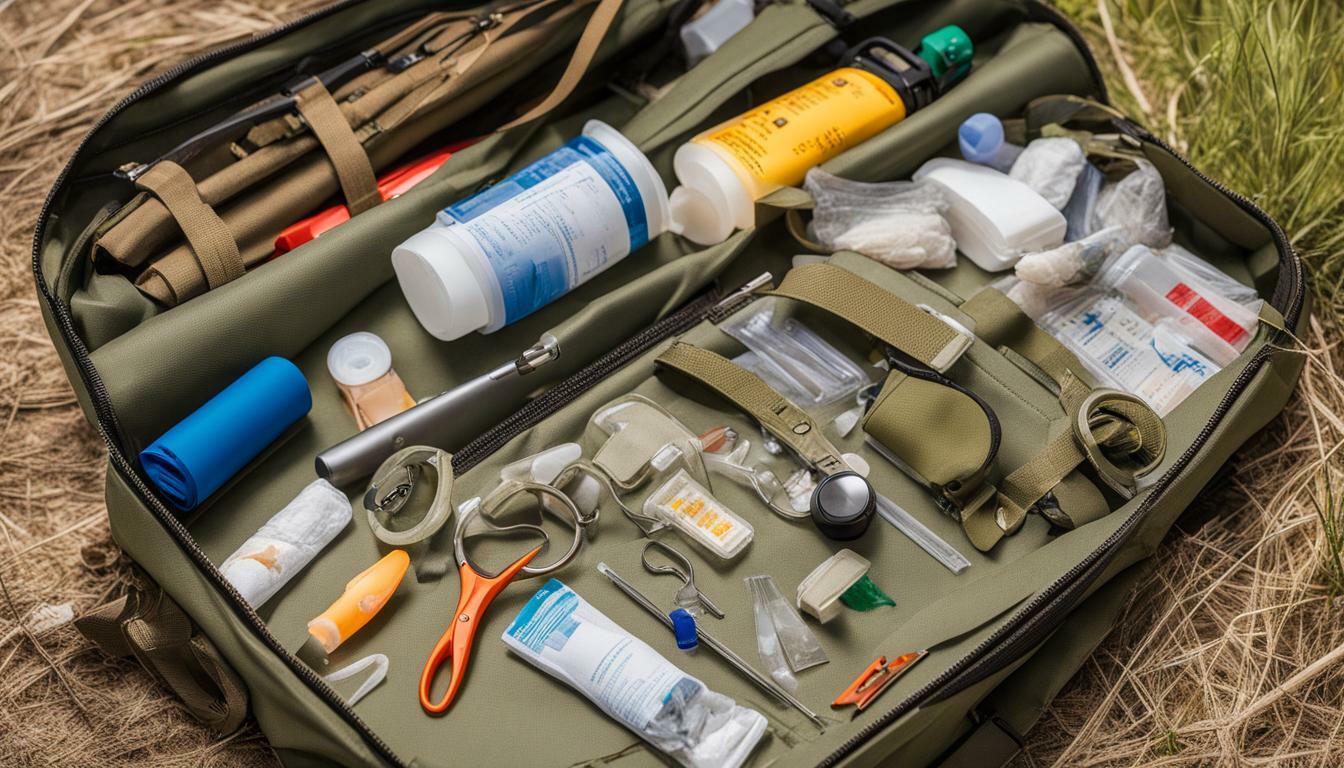
Importance of Audio Recording Equipment Safety
When it comes to wildlife sound recording, having good quality audio recording equipment is essential to capture the best possible audio. However, it’s also important to prioritize safety when handling your equipment.
One of the biggest risks to your audio recording equipment is exposure to the elements. Dust, moisture, and extreme temperatures can all cause damage and decrease the lifespan of your gear. It’s important to keep your equipment dry and away from direct sunlight, when possible.
Another important safety consideration is handling your equipment properly. Dropping or mishandling your gear can lead to damage, which may impact sound quality or render your equipment completely unusable. Always handle your equipment with care and use protective cases or bags to prevent damage during transit.
In addition to handling and storage, regular maintenance of your recording equipment is crucial. This includes cleaning your equipment regularly, checking for loose cables or connections, and replacing worn-out parts as needed. Proper maintenance can not only prolong the lifespan of your equipment but also ensure that it performs optimally when you need it most.
Remember that prioritizing safety when handling and maintaining your audio recording equipment is essential to capturing high-quality audio safely and effectively.
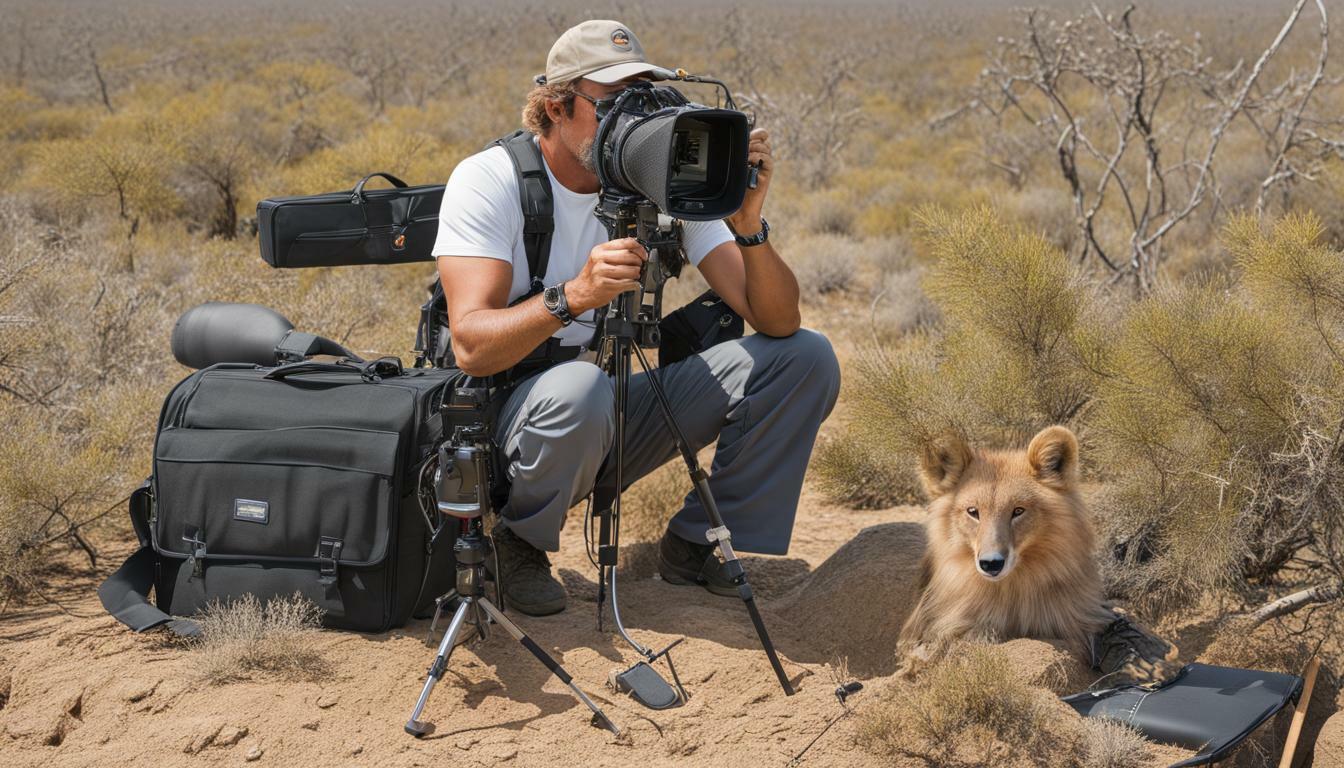
Wildlife First Aid Tips for Sound Recordists
When out in the wild capturing audio, it’s essential to be prepared for any emergencies that may arise. As a sound recordist, not only do you need to ensure your safety, but also that of the wildlife around you. Here are some wildlife first aid tips to help you stay safe while capturing audio:
- Handle injured animals with care: If you come across an injured animal, it’s important to approach it slowly and with caution. Use gloves to handle the animal to avoid any injuries, and keep it warm and quiet while you assess its injuries.
- Basic first aid techniques: Learning basic first aid techniques can help you provide immediate care to yourself or others in the event of an emergency. This can include treating cuts and wounds, applying bandages and splints, and performing CPR if necessary.
- Contact professional wildlife rescuers: If you come across an injured animal that requires professional care, contact a local wildlife rescue organization. They have the necessary skills and equipment to treat the animal properly and safely.
By following these wildlife first aid tips, you can ensure that both you and the wildlife around you are safe and protected while capturing audio in the wild.
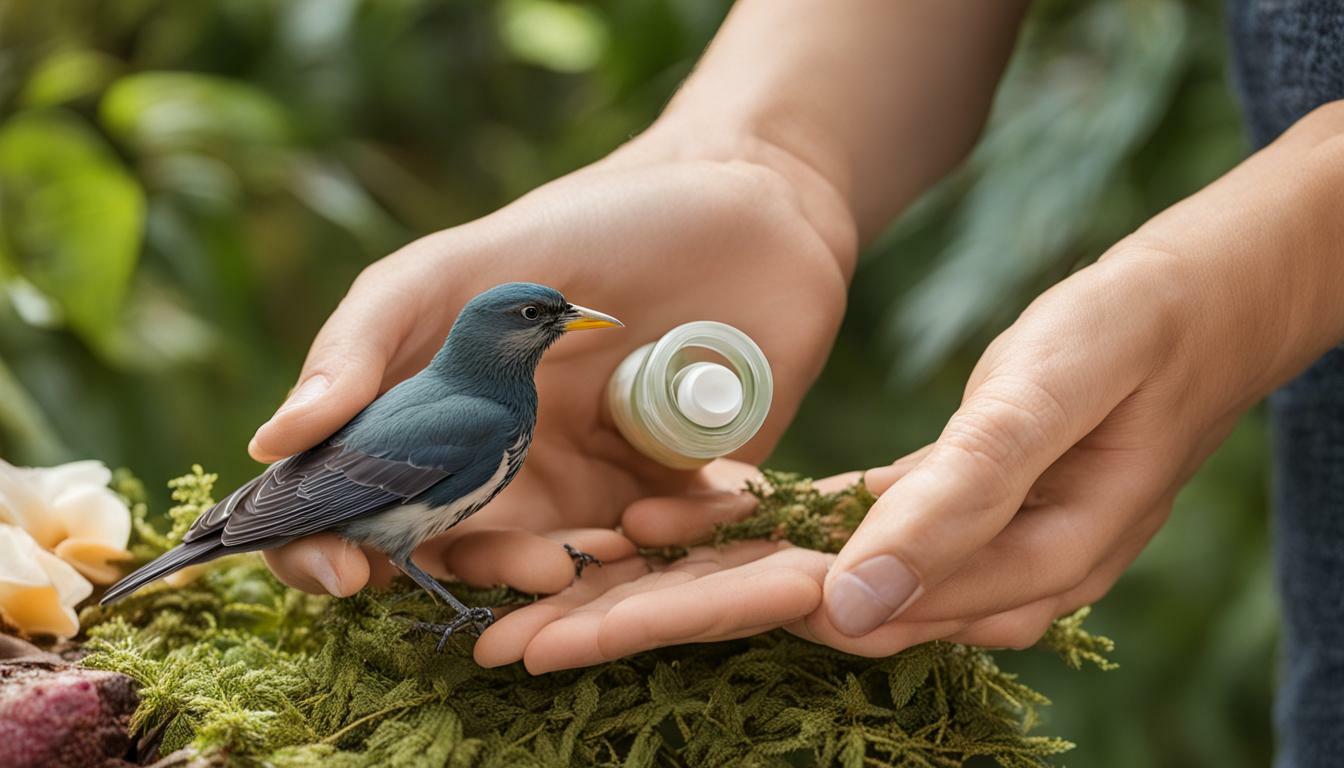
Creating a Comprehensive Wildlife Sound Recording Kit
When it comes to wildlife sound recording, having the right equipment is essential for capturing high-quality audio safely. It’s important to build a comprehensive sound recording kit, taking into account the specific needs of your recording environment and the wildlife you may encounter.
Here are some essential items to consider including in your sound recording gear:
| Item | Purpose |
|---|---|
| High-quality microphone | For capturing clear and accurate audio recordings. |
| Shock mount | To reduce noise and vibrations from handling and movements. |
| Windscreen | To prevent wind noise from interfering with the audio recordings. |
| Headphones | To monitor the audio as it’s being recorded and check for any issues or background noises. |
| Extra batteries and charger | To keep your equipment powered throughout the recording session. |
| Flashlight or headlamp | To navigate through dark or low-light environments. |
It’s important to prioritize your safety while capturing audio outdoors. Here are some tips to ensure your sound recording sessions are both productive and safe:
- Always assess the potential risks and hazards of your recording environment before starting.
- Wear protective clothing and gear, such as sturdy boots and insect repellent, to prevent injuries or illnesses.
- Be aware of your surroundings, and maintain a safe distance from wildlife to avoid disturbing or endangering them.
- Keep a first aid kit and emergency supplies on hand, and make sure they’re up-to-date and well-stocked.
By preparing a comprehensive wildlife sound recording kit and prioritizing your safety, you can capture stunning audio recordings while minimizing risk and ensuring your well-being in the wild.
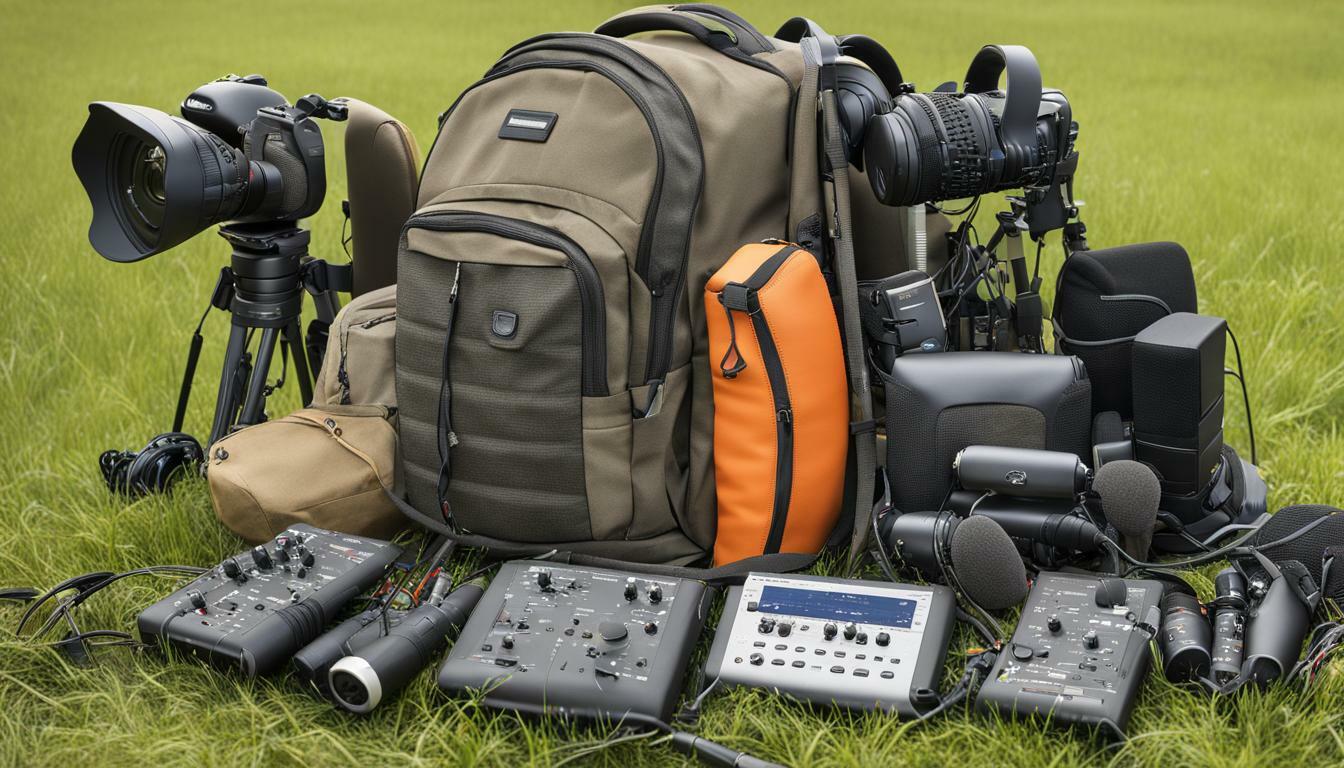
Importance of Regular First Aid Kit Maintenance
As a wildlife sound recordist, having a well-equipped first aid kit is crucial to ensuring your safety while capturing audio in the wild. However, simply having a kit is not enough. Regular maintenance is necessary to ensure that the kit is always up to date and well-stocked with emergency medical supplies and wildlife rescue kits.
One of the most important aspects of maintaining your kit is checking the expiration dates of all items regularly. This includes checking the expiration dates of medications, such as pain relievers and insect repellents, as well as monitoring the condition of bandages and other emergency medical supplies to ensure they are still sterile and usable.
Another important consideration is updating your kit to include any new or specialized items that may be relevant to the specific environments and wildlife you are recording. For example, if you are recording in an area known for particular types of venomous snakes or insects, it may be necessary to include specialized first aid items to treat bites and stings.
Regular maintenance also includes cleaning and organizing your kit to ensure that all items are easily accessible in case of an emergency. It is helpful to develop a system for packing and organizing your kit, such as grouping items by type or labeling compartments for easy identification.
By keeping your first aid kit updated and well-maintained, you can ensure that you are always prepared for any emergencies that may arise while capturing audio in the wild. Remember, prevention is always better than cure, and regular maintenance of your first aid kit can help prevent accidents and ensure your safety.
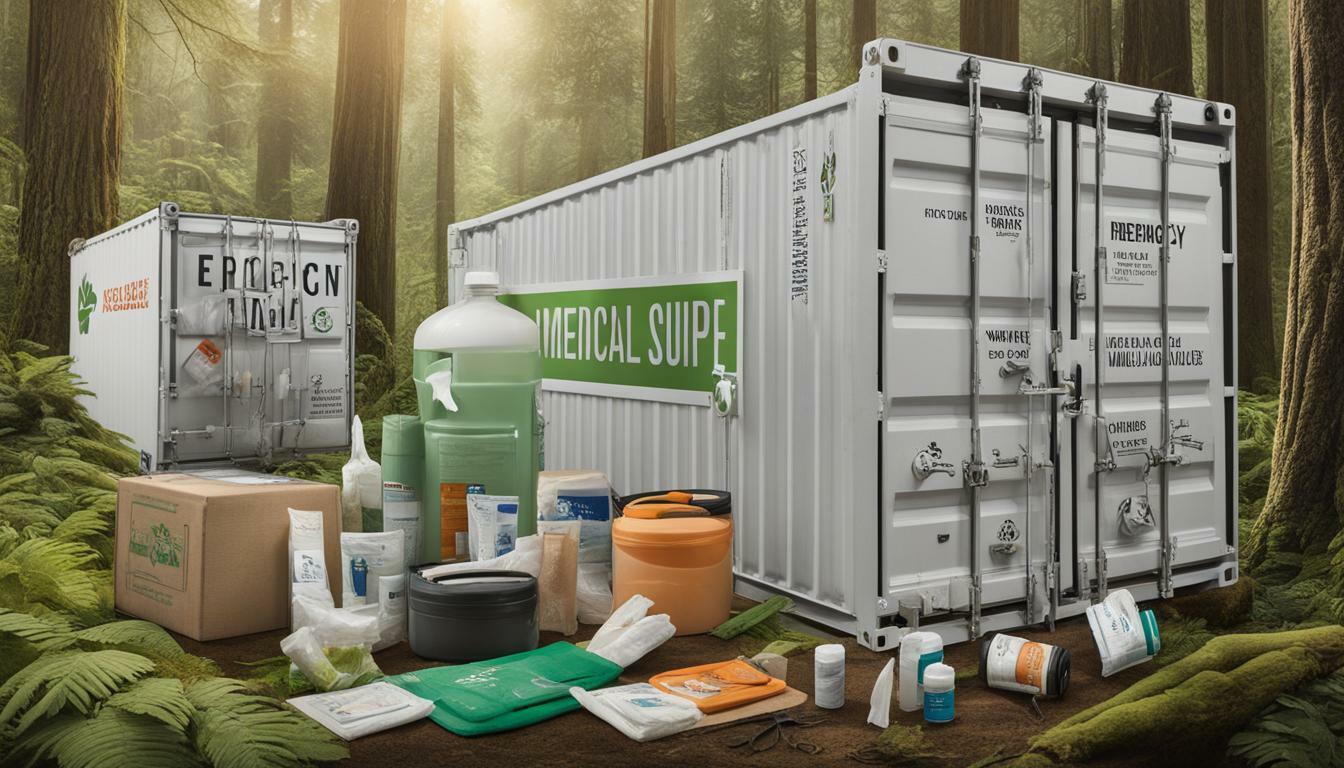
Staying Safe in Wildlife Sound Recording Environments
Recording audio in the wild can be an exhilarating experience, but it can also be hazardous without proper precautions. As a sound recordist, your safety should be your top priority, and there are several measures you can take to ensure your wellbeing.
Effective Communication
Effective communication is essential when working in a team or with a guide. Make sure to discuss the potential risks and hazards before starting your recording session. Ensure that everyone understands the importance of following safety protocols and that everyone has access to necessary safety equipment, including first aid kits.
Risk Assessment
Before beginning your recording session, perform a risk assessment of the area to identify potential hazards. Be aware of the environmental conditions, including weather, terrain, and wildlife presence. Take note of any emergency exits and ensure that you have a clear escape route in case of danger.
Protective Gear
Wear appropriate protective gear, including helmets, sturdy footwear, and clothing that covers exposed skin. Insect repellents and sunscreen are also beneficial in protecting against bites and sunburn. Make sure to pack rain gear and warm clothing, as weather conditions can change quickly in the wilderness.
Emergency Planning
Ensure that you have an emergency plan in place in case of an accident or injury. Discuss emergency procedures with your team, including how to contact emergency services and how to administer first aid. Make sure that your first aid kit is well-stocked and up-to-date, including essential medical supplies and specialized wildlife rescue kits.
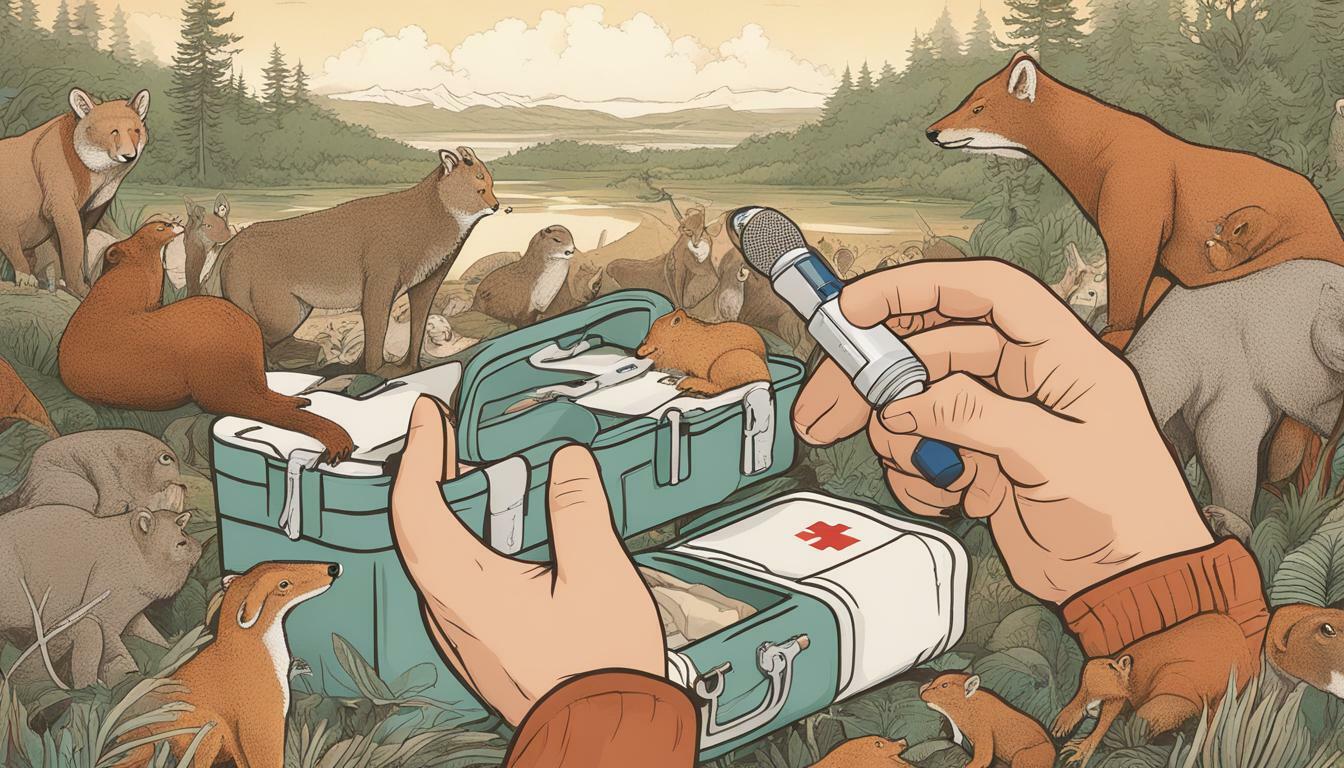
Capturing audio safely in wildlife environments requires careful planning and preparation. By taking the necessary precautions, including effective communication, risk assessment, protective gear, and emergency planning, you can stay safe while still achieving high-quality recordings.
Importance of Professional Training for Wildlife Sound Recordists
While having a well-stocked first aid kit is essential for ensuring the safety of sound recordists during wildlife recording sessions, it is equally important for them to have the necessary skills and knowledge to handle emergencies. Professional training can provide sound recordists with the necessary expertise in wildlife behavior, first aid, and safety protocols. This can not only help them avoid potential dangers but also ensure the well-being of the wildlife they encounter.
Training in wildlife behavior can help sound recordists understand how different species behave in the wild, enabling them to predict and avoid potentially dangerous situations. In addition, training in first aid can equip them with the necessary skills to administer basic medical attention in case of injuries or accidents. This can make a significant difference in saving lives, not only of wildlife but also of fellow team members.
Moreover, training in safety protocols can help sound recordists recognize potential hazards, assess risks, and develop contingency plans in case of emergencies. They can learn how to use specialized equipment, such as wildlife rescue kits, and communicate effectively with other team members in case of distress.
Overall, professional training can enhance the safety and well-being of sound recordists and the wildlife they encounter. It can also improve the quality of recordings and enable sound recordists to capture audio safely and effectively in the wild. Therefore, it is essential for sound recordists to acquire the necessary skills and knowledge to handle emergencies and ensure the safety of themselves and the wildlife they record.
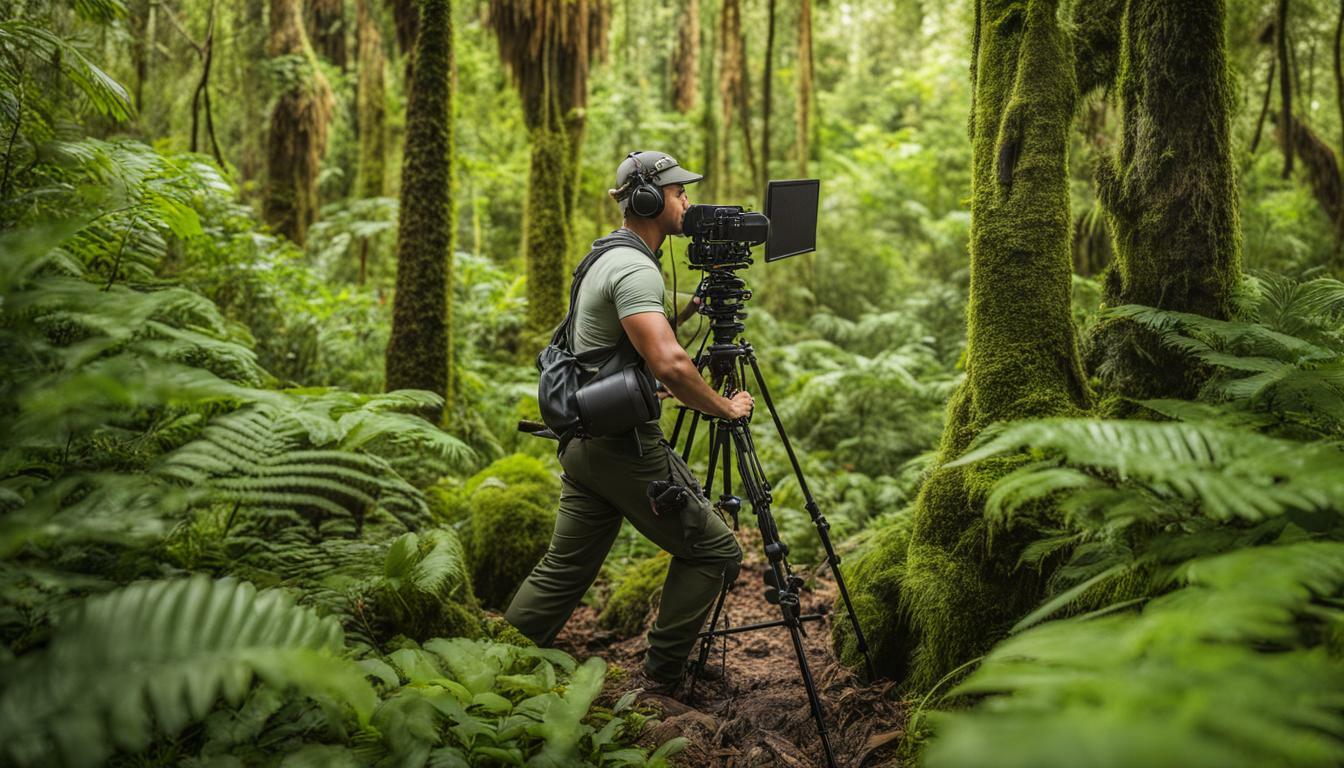
Conclusion
In conclusion, first aid kits are essential for wildlife sound recordists. The risks and challenges of capturing audio in the wild require recordists to prioritize their safety and be adequately prepared for emergencies.
By having a well-equipped first aid kit with essential medical supplies and wildlife rescue kits, sound recordists can ensure their safety and the safety of the wildlife they encounter. Additionally, proper handling and maintenance of equipment can prevent accidents and damage, ensuring smooth and safe recording sessions.
Recording high-quality audio in the wild requires a comprehensive recording kit with essential sound recording gear and accessories while prioritizing safety. Regular first aid kit maintenance and effective communication, risk assessment, and safety practices can help sound recordists stay safe in wildlife sound recording environments.
Professional training in wildlife behavior, first aid, and safety protocols is also crucial for sound recordists to be adequately prepared for any challenges they may encounter in the field.
In summary, prioritizing safety and having well-equipped first aid kits, proper equipment handling, and effective safety practices are essential for wildlife sound recordists to capture audio safely and successfully in the wild.
